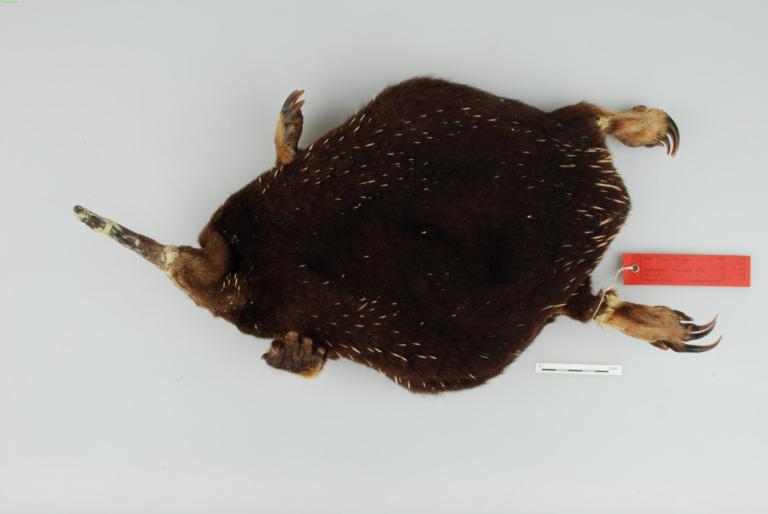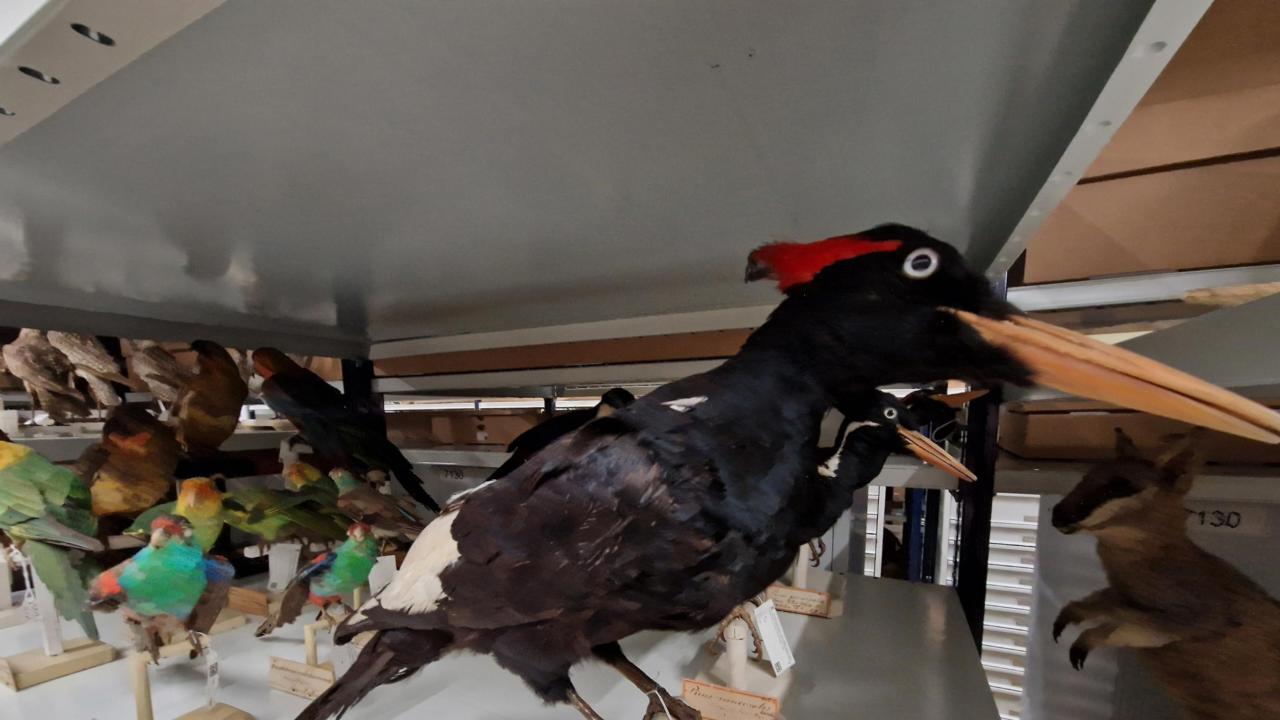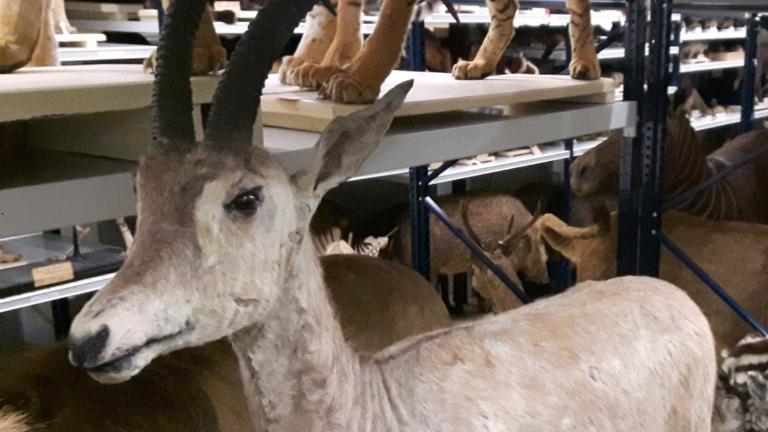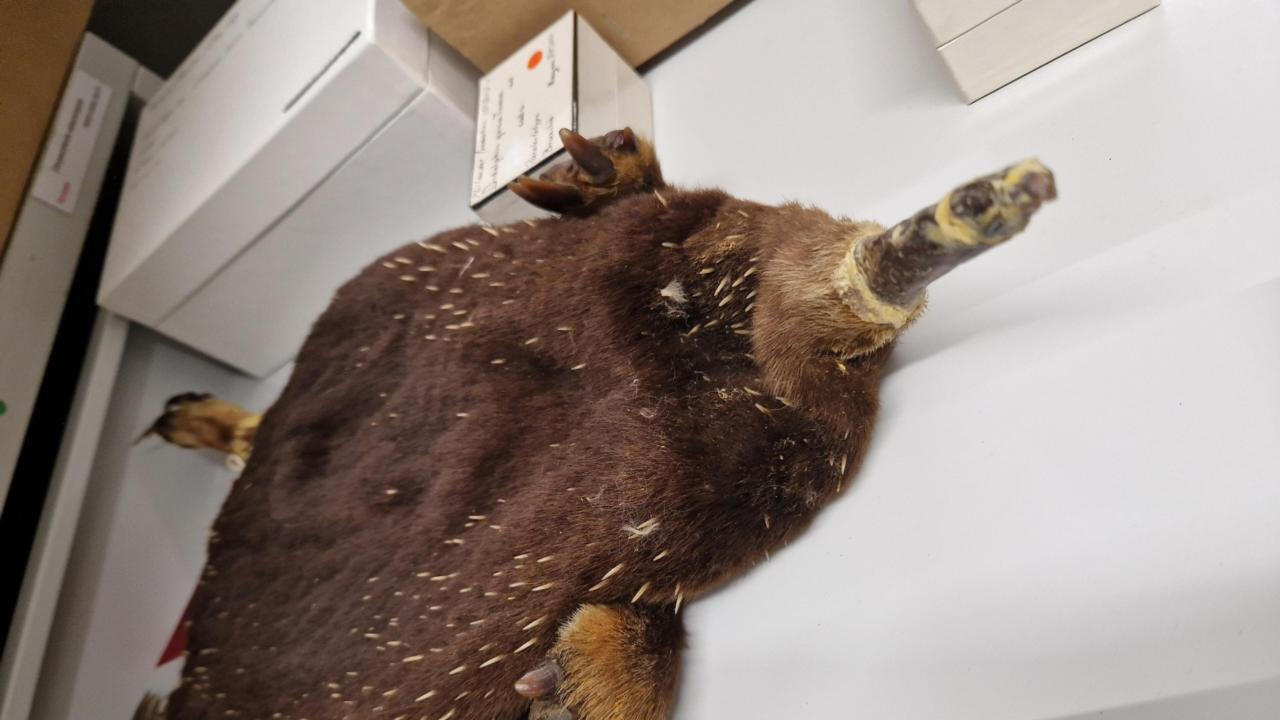
A British expedition has shot the first ever images of a Sir David Attenboroughs long-beaked echidna. Until then, the specimen at Naturalis was considered to be the only evidence that the species ever existed at all.
In the NaturalisTreasure Room
Deep within Naturalis is our Treasure Room, a place where we keep the scientifically most important animals in our collection, and a lot of extinct species. For biologists, this is holy ground. Here you can find a dodo, a bluebock, ivory billed woodpeckers and thylaclines - species that you only exist in museums like Naturalis, nowadays.


The echnidnaof Sir David Attenborough
One the biggest rarities in this room full of rarities is Sir David Attenborouhgs long-beaked echidna (Zaglossus attenboroughi). Exactly one specimen of this species is known in the entire world. It was collected in 1961 by a botanist in the Cyclops Mountains in what is now Indonesia. In 1998 a study determined that this specimen was a separate species, and the authors named it after nature documentary hero Sir David, as a hommage to his work on the fauna of Papua. They had never seen a live one, and as far as we know, neither has anybody else, since 1961.

First images ever
Nobod, until this week. Because a trap cam from a British expedition filmed something unique: a living specimen! That's great news for echidna lovers everywhere - and you should be one, because echidna's are awesome. Egg-laying mammals without teeth, and a weird stomping gait. Presumably, the females have a pouch because in other echidna species they do, but nobody knows because our specimen is male and nobody knows what the females look like.
The futurefor now
So, it's not extinct, as many thought. And 62 years is, in fact, a lot shorter than the 172 years that it took for our black browed babbler to lose its status as the only representative of its kind. "Hopefully, this will inspire people to give nature in the Cyclops Mountains the protection that it needs", says Naturalis collection manager Pepijn Kamminga.
Because our specimen is a so-called Holotype, it needs to be available for scientific research. As such, it will not be on display in the museum for the foreseeable future.